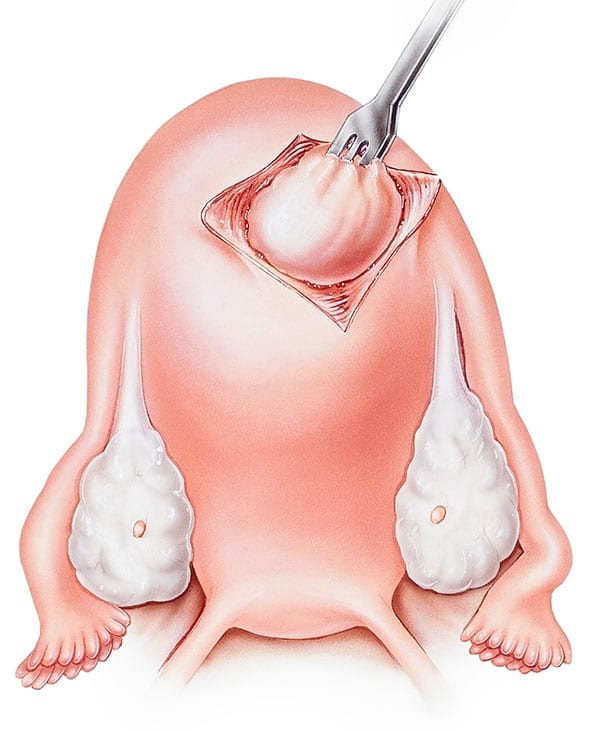Fibroid tumors (also called myomas and leiomyomas) are benign (non-cancerous) accumulations of smooth muscle tissue from the muscular walls of the uterus. A woman may develop multiple fibroids and the tumors can vary in size from smaller than a marble to larger than a grapefruit and may increase in size over time. Fibroids can be located within the inner, middle or outer layers of the uterine wall or on stalk-like projections on the outside of the uterus. Fibroids can affect women of any age but are most commonly seen in women in their 30s and 40s.

- Abnormal vaginal bleeding: longer, more frequent and/or heavier menstrual flows and bleeding in-between periods
- Uterine cramping that worsens with menstruation
- Pelvic pain and lower back pain
- Painful sex
- Anemia may result from excessive blood loss
- A feeling of pressure in the pelvis
- If a large fibroid presses on the bowel this may result in painful bowel movements, rectal pain and constipation
- If a large fibroid presses on the bladder this may result in urinary frequency or difficulty urinating
The most common symptoms of fibroids are heavy menstrual periods and uterine cramping. Fibroids, especially if small, may not cause any symptoms at all.
Fibroids may be suspected based on your symptoms and on the findings during a routine pelvic exam. Sometimes fibroids are picked up incidentally and are asymptomatic. Sonography (ultrasound) is used to visualize the uterus and detect any fibroids.
It’s very important to determine which type of fibroid treatment is best for you based on the type and number of fibroids that are present, the symptoms they are causing and your own personal preferences, including desire to preserve fertility. Treatment can remove the fibroids or simply manage the symptoms they are causing, such as medical therapy to control or reduce menstrual bleeding and uterine cramping. The only treatments to actually remove the fibroids, however, are surgical. Fortunately, with sufficient surgical expertise, most fibroids can be treated conservatively (avoiding the need for the removal of the uterus).
The most common procedure to remove a fibroid is called a myomectomy. In some cases, a woman may elect to have a laparoscopic hysterectomy, either with or without the removal of her cervix. Removal of the ovaries (and thus, the loss of hormones) is not required nor recommended in the treatment of fibroids.
Dr. Cook has developed the advanced surgical skills required to remove fibroids, preserving and reconstructing the uterus and minimizing scarring.
Due to the recent FDA guidelines concerning the morcellation of fibroids, the hospitals at which Dr. Cook operates have suspended this procedure. It is hoped that this procedure will be reintroduced once measures have been taken to contain the spread of uterine tissue during morcellation. The benefit of morcellation is that it enables the minimally invasive removal of fibroids, reducing scarring and recovery time for the patient.
